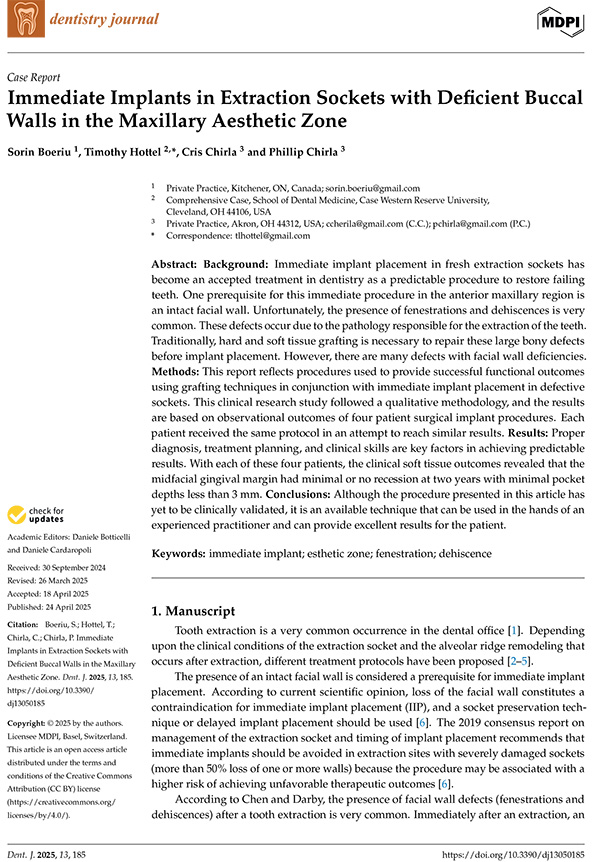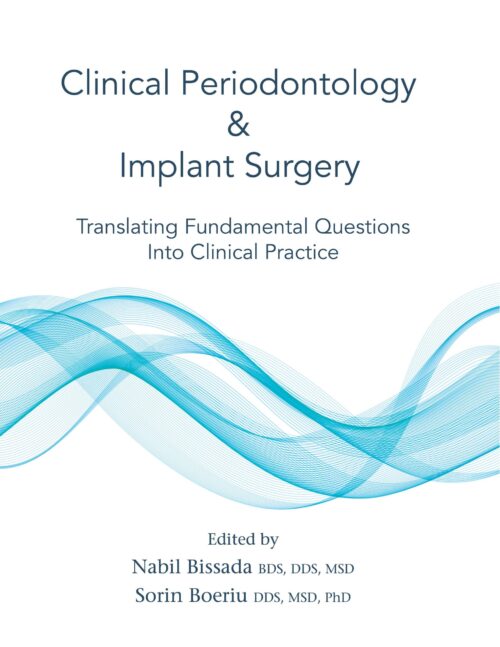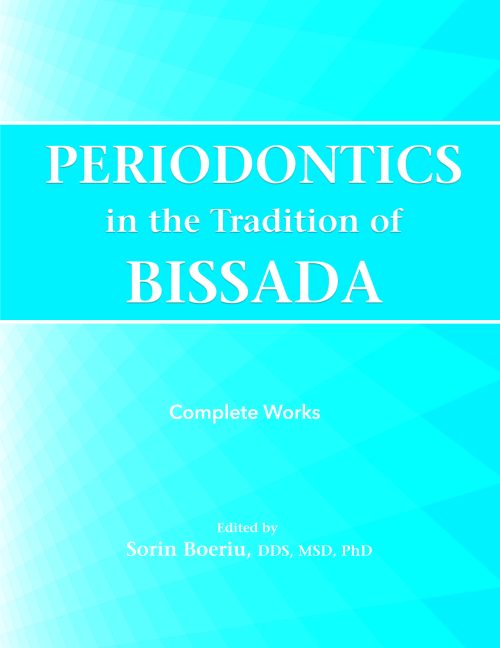Description
Abstract: Background: Immediate implant placement in fresh extraction sockets has
become an accepted treatment in dentistry as a predictable procedure to restore failing
teeth. One prerequisite for this immediate procedure in the anterior maxillary region is
an intact facial wall. Unfortunately, the presence of fenestrations and dehiscences is very
common. These defects occur due to the pathology responsible for the extraction of the teeth.
Traditionally, hard and soft tissue grafting is necessary to repair these large bony defects
before implant placement. However, there are many defects with facial wall deficiencies.
Methods: This report reflects procedures used to provide successful functional outcomes
using grafting techniques in conjunction with immediate implant placement in defective
sockets. This clinical research study followed a qualitative methodology, and the results
are based on observational outcomes of four patient surgical implant procedures. Each
patient received the same protocol in an attempt to reach similar results. Results: Proper
diagnosis, treatment planning, and clinical skills are key factors in achieving predictable
results. With each of these four patients, the clinical soft tissue outcomes revealed that the
midfacial gingival margin had minimal or no recession at two years with minimal pocket
depths less than 3 mm. Conclusions: Although the procedure presented in this article has
yet to be clinically validated, it is an available technique that can be used in the hands of an
experienced practitioner and can provide excellent results for the patient.
Keywords: immediate implant; esthetic zone; fenestration; dehiscence



